HONOLULU — As roughly 600 unionized nurses employed at the Kapiolani Medical Center for Women & Children went on strike on Sunday, a temporary workforce made up of some of the top children’s hospitals around the country stepped in to acclimatize themselves to the medical center’s procedures and patients, said Kapiolani Medical Center Chief Operating Officer Gidget Ruscetta at Sunday’s press conference.
As passing vehicles outside honked their horns in support of the nurses lining Punahou and Bingham streets, Ruscetta spoke to journalists, reassuring them and, in turn, the public that the medical center was fully staffed with no disruption in care.
She said 35 patients had already visited the emergency room, ambulances had arrived, and two emergency surgeries had been completed. “I want to reassure everyone that our critical care areas are open, and all clinical services are open and operational,” said Ruscetta.
Responding to questions, Ruscetta explained Kapiolani and the Hawaii Nurses Association have been bargaining since September. They’ve had 17 sessions to date.
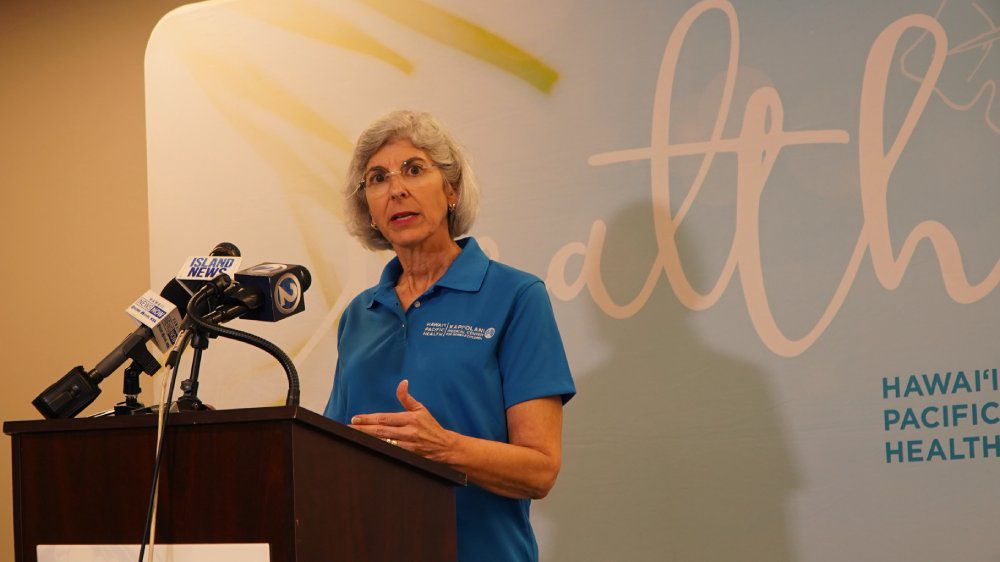
Kapiolani presented their “last, best and final offer” to HNA on Jan. 10 and 11. Wages are included in the offer, as well as a “staffing council” and scheduling technology.
“Wages was one of their top priorities,” said Ruscetta. “The wages we have put on the table for our unionized nurses would make them among the highest paid in the State of Hawaii. These are salaries that range between $124,000 and $151,000 a year. And that is for a full-time nurse working three days a week.”
Ruscetta said a “staffing council” is important to Kapiolani. “We want to work with our nurses in partnership, looking at staffing and moving the medical center forward,” she said.
The third item, technology, would give the nurses a voice when it comes to their scheduling, said Ruscetta. It would allow nurses to “plug in” their schedules ahead of time and provide them the opportunity for additional shifts if that is what they want.
The Honolulu Star-Advertiser reported the union as saying the final offer from Kapiolani did not address a “staffing ratio” concern. Staffing ratios set the maximum number of patients that a nurse cares for during each 12-hour work shift.
“In our proposal to the union we have put on the table what’s called ‘staffing guidelines.’ The union has put on the table a ‘hard ratio,’” explained Ruscetta during the press conference. “When you look at this, the majority of which we are in alignment with the nurses. What we are wanting at Kapiolani, and our nurse leaders need for our patients, is the ability to look at the types of patients we have in the medical center and how sick they are. And then we need to be able to bring in additional nurses when we need them to provide the care that is necessary for our patients without delay.
“When you have a ‘hard ratio’ you need to have the nurses present before you can move a patient, and multiple times during the day we have babies being born, we have critical patients, we have surgeries, and we’re needing to move patients to what’s called ‘a different level of care’ as they get better or as they progress, and they may need a higher level. This affords us the ability to do that,” said Ruscetta.
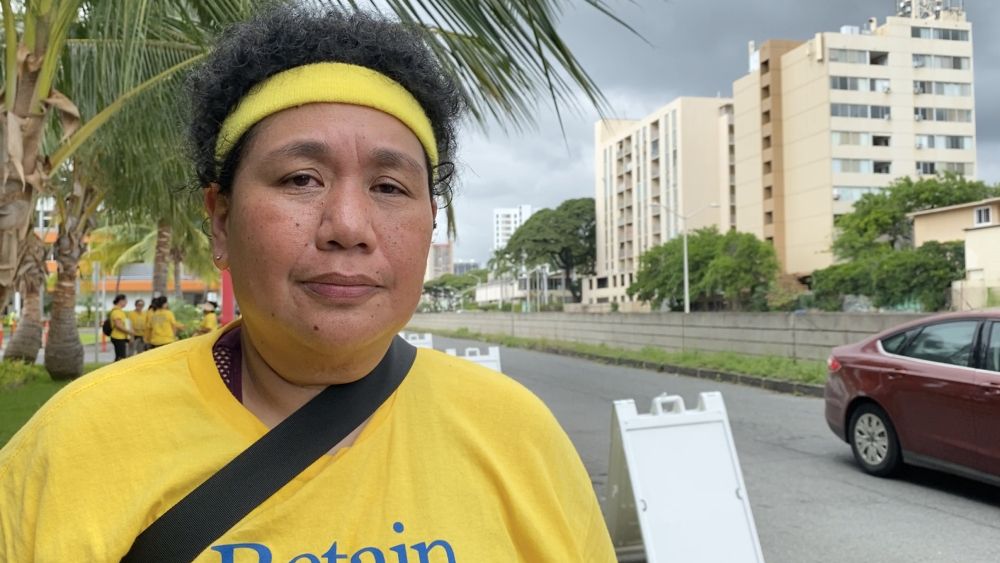
Rosalee Agas-Yuu works at Kapiolani as a critical care transport nurse or flight nurse and is also president of Hawaii Nurses Association. She stood outside the medical center alongside over a hundred other nurses holding signs.
“We are out here today because we want to make sure that the community understands and everybody knows that the nurses have problems inside this hospital,” said Agas-Yuu. “And the terms of that is making sure we have enough staff to take care of the patients that are in this hospital.”
Agas-Yuu said the situation is challenging because Kapiolani is a specialty hospital, dealing with pediatrics, neonatal, high-risk obstetrics cases, as well as pediatric and adult oncology patients. For the nurses, it’s important that there are enough nurses caring for the patients. “Because for the last three years, it hasn’t been.”
Agas-Yuu says what’s been happening is that there aren’t enough nurses caring for patients “and they (Kapiolani) want to continue, but nurses are saying, ‘Hey, we’re getting burnt out.’ So (this is why) we have to stand out here, stand strong and tell everybody, ‘We’re standing out here because one, we worry about our patients that aren’t getting enough nursing care, and two, we’re gonna keep losing nurses, retaining them. They (Kapiolani) don’t have a problem bringing them in. It’s retaining them.”
Pointing up toward the intensive care unit, Agas-Yuu said, “Look what happened today. One-to-one ratios up there in the ICU. We’re lucky to get that with certain diagnoses in ICU. At one point, they wanted, in the NICU (neonatal intensive care unit), three-to-one. But up there, one-to-one. So, you know, it’s a little distressing they can do it when they want to, and while working we say, ‘Hey, this is not working,’ they don’t listen. They haven’t listened for three years, so this is why we’re out here standing in line.”
Mandatory overtime is another concern for nurses.
Ruscetta explained that different teams go to the bargaining table and because she was not at the table during that particular discussion, she would not be able to provide details. However, she explained, “Mandatory overtime is something that is only used when you’ve exhausted everything else in your tool chest, if you will. So you ask people are you able to work overtime, do you want to work overtime. We have a lot of people that like to do that. Or I need you to help us for an hour.
“We have in our agreements our nurses do not work over 16 hours. They work over 12-hour shifts at present so we would ask them for no more than four. We only have a very minimal amount of overtime that is mandatory. And that is when you have exhausted everything else that you need,” said Ruscetta.
Agas-Yuu said there is mandatory overtime and then there’s overtime. She said nurses will do overtime, sometimes because there’s nobody else, especially in the care of newborns. “You just need to make sure there’s enough (nurses) because we’re working short all the time.”
She said that her unit takes care of babies, children who are sick on the outer islands. Ever since the Hawaii Life Flight crash killed all three people onboard in Dec. 2022, they’ve been short one to two nurses. Agas-Yuu said, “We’ve been covering, sometimes we’re on for 24 hours straight because we feel that’s our responsibility.”
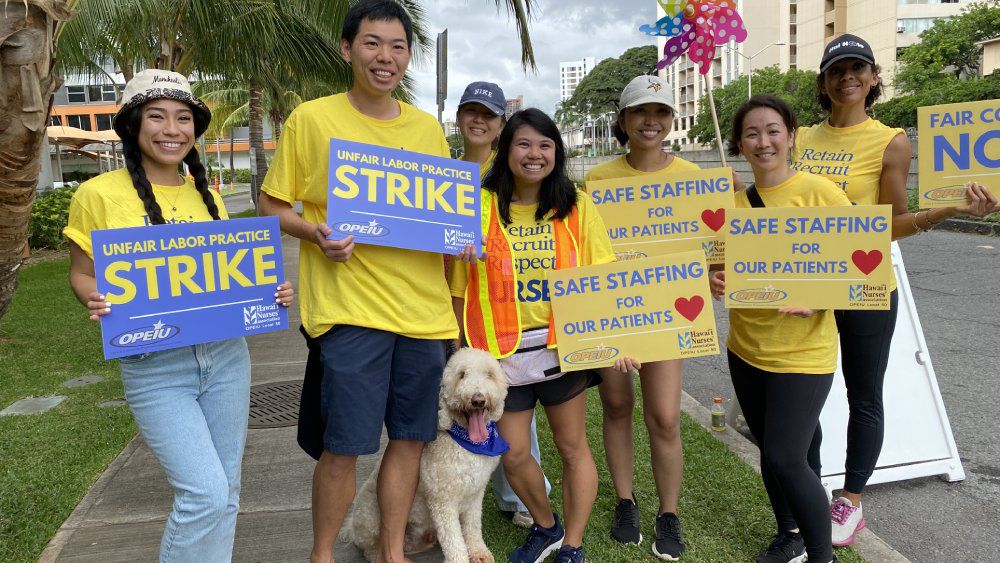
In terms of retention levels at the medical center, Ruscetta said, “We have very good retention here at the medical center. Eighty percent of our nurses have been with us more than two years, 75% of our nurses have been with us over five years. With every industry you have variations in your workforce. We know across the country that everyone is working on retention for nurses.”
Kapiolani works with universities, community colleges, even high schools to attract students into health care, according to Ruscetta.
“We’re in a very unique situation because we are the only full-service women’s and children’s hospital in Hawaii and in the Pacific Basin,” said Ruscetta. “We serve a very special population. So we work very hard on retention, recruitment and we’re always looking at ways to make sure that we have a workforce that is appropriate for what we need because we provide such a unique specialty here in Hawaii.”
The 600 unionized nurses provide services on the floors, said Ruscetta. They work full-time, part-time, per diem. Kapiolani runs two 12-hour shifts with each shift averaging about 140 nurses.
The temporary work force also works the same shifts. “We have several hundred that we have brought in. We are fully staffed in the medical center, and they will be here for the duration of the strike,” said Ruscetta.
The strike is set to continue through 6:59 a.m. Jan. 28.
During the press conference, Ruscetta stated, “I want to be clear. The union made a decision to strike. We did not, nor would we ever make a decision to strike. We have a priority and a responsibility to this community, to care for the children and women in Hawaii and the Pacific Basin. That is our priority.”
Over a week ago, Kapiolani had proposed to meet with the union on Jan. 31 and Feb. 1. Ruscetta said, “As of Friday they finally responded that they are willing to meet on Friday Jan. 31 and Feb. 1.”
She continued, “At this time, we are focused on our patient care and the services that are provided here because we have a responsibility to this community, and we want to make sure that there’s no interruption in that care. When we get back to the bargaining table, it is our desire to work towards an agreement. So we will work toward that on the 31st and the 1st.”
Sarah Yamanaka covers news and events for Spectrum News Hawaii. She can be reached at sarah.yamanaka@charter.com.
EDITORʻS NOTE: The spelling of “staffing counsel” has been revised to “staffing council.” (Jan. 23, 2024)





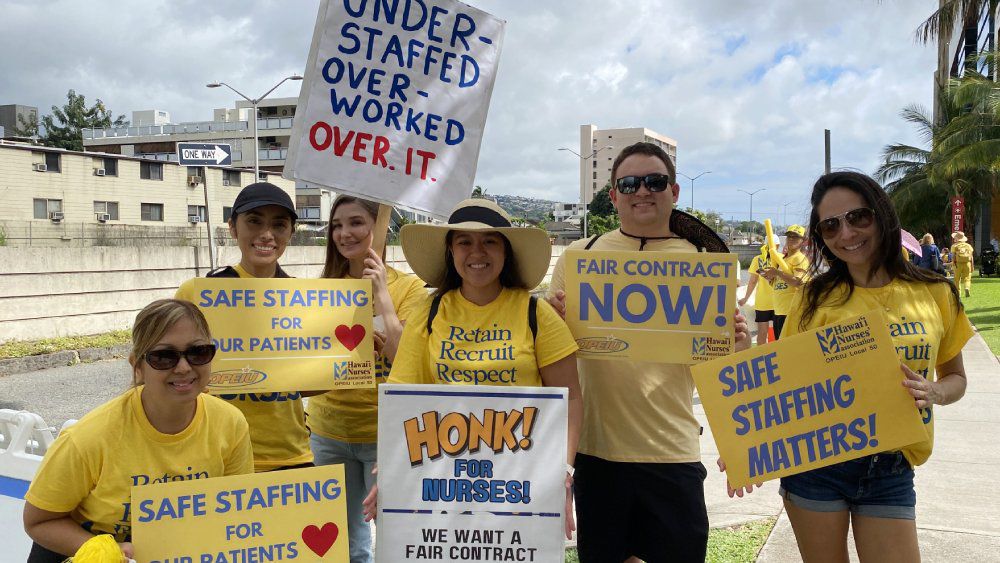
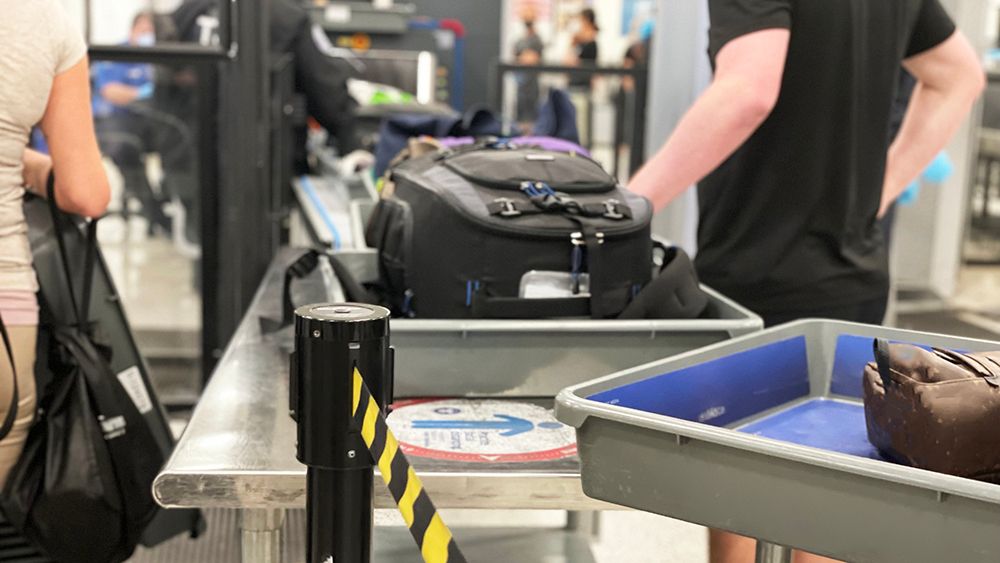
40325)

